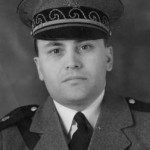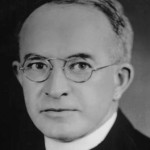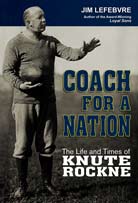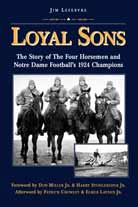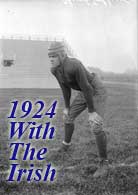Hats off to Corey Robinson and the Notre Dame football team for understanding that much of what makes Notre Dame football special is its history and tradition.
Today the football team voted to sing the “Alma Mater” after every game — win or lose.
“It’s bigger than us and it’s bigger than football,” said Robinson, a sophomore wide receiver who along with senor cornerback Matthias Farley met with leaders of student government about the matter.
“We, as a team, see the Alma Mater as an instrument of unity; we are Notre Dame regardless of what happens on the field. We know how our students fiercely support us rain, shine, sleet or snow and we want to show them our sincere appreciation by standing and singing as a unified student body celebrating our wonderful University,” Robinson said.
The Alma Mater — more than just about anything else — is the strongest link back to the foundational elements of the football program. The music was written by legendary Notre Dame Band director Joseph Casasanta, and the words were provided by University President Rev. Charles O’Donnell, C.S.C It was first introduced at the dedication of the new Notre Dame Stadium in 1930 and is often referenced in connection with the funeral of Coach Knute Rockne in 1931. It was Father O’Donnell who eulogized Rockne at the funeral by saying:
“He might have gone to any university in the land and been gladly received and forever cherished there. But he chose Our Lady’s school, Notre Dame. He honored her in his life as a student, he honored her in the monogram he earned and work, he honored her in the principles he inculcated and the ideals he set up in the lives of the young men under his care. He was her own true son.”
We believe Father O’Donnell, Joseph Casasanta and Knute Rockne would concur with the young men on the 2014 football team who realized the tradition and history that swirls around them every day on campus.
To read more about the building and dedication of the Notre Dame Stadium in 1930 (did you know that ND played all its “home games” of 1929 on the road and at Soldier Field in Chicago while the Stadium was being built?) and the life and times of Knute Rockne, click here.
